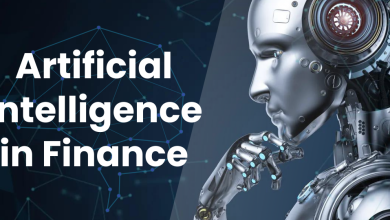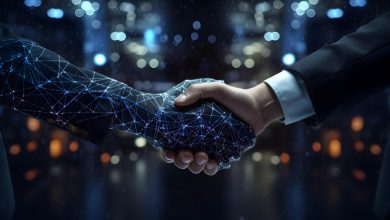A factory maintenance technician receives an alert notifying them that a conveyor belt has stopped on the packaging line. The equipment is a new model, unfamiliar to the technician, but instead of reaching for a manual, they turn to an AI-powered assistant on their device. Using natural language, they ask what’s wrong, identify the likely issue, and are guided through the required checks using augmented reality to resolve the fault quickly. This is just one compelling example of how AI, powered by large language models (LLMs), can support a workforce with varying levels of experience.
The business potential of AI is unparalleled. It can analyze real-time operational (OT) data from multiple sensors to provide contextual awareness and actionable insights to workers. This will help address the current skills gap and expand the talent pool, empowering a new generation of digitally fluent Gen Z workers to thrive using AI, and enabling smarter, leaner, more competitive, and sustainable operations.
Bridging the skills and language gap with AI and LLMs
Support for multiple nationalities in the workplace is another application of AI and large language models (LLMs) in an industrial setting. For example, a technician could scan a QR code on a new 3D printing system, prompting an AI chatbot which guides them through potential issues, in their native language, complete with visual aids. LLMs offer a natural language interface to industrial systems, making it easier for new and existing employees to interact with unfamiliar technologies, augmenting onboarding and upskilling activities.
In another example, a maintenance worker could ask why a production line has stopped or for the error rate trend and get an easily understandable response. This will accelerate troubleshooting, root cause analysis, and issue resolution. The enterprise benefits through faster fixes and increased equipment longevity.
In a diverse industrial setting, with multiple nationalities working together, the ability to address machines in any language will reduce the errors that create downtime and potentially cause workers harm, while also expanding the pool of workers available for hire.
Boosting Safety with AI insights and sensor fusion
Using AI and sensor fusion to aggregate and process data from multiple sensors, workforce safety can be boosted in many other ways. In a manufacturing setting, sensor fusion using AI can detect minor deviations from the norm on the floor – equipment power spikes, temperature, air quality, or other changes – to preempt potential failures that could impact workers’ health.
AI can also automate resolutions, dynamically adjust power loads, or shut down production lines. Using AI to monitor air quality, ventilation can be triggered, or workers alerted, for example, in the case of a gas leak at a mine.
Using AI to learn and identify patterns from data aggregated from video monitoring solutions, environmental sensors, worker smart wearable devices, geofencing, and man-down solutions, lone-worker monitoring is more effective. At a port, where people work alongside autonomous and manned vehicles across a busy yard, AI can ingest data from all equipment, vehicles, and environmental sensors and alert people to hazards around corners or reroute vehicles to avoid a collision.
AI-powered contextual awareness for Enhanced Operational Visibility
Beyond boosting safety, industrial enterprises will gain unparalleled operational visibility to optimize processes by aggregating and processing data from multiple sources and using AI to analyze it.
AI-powered contextual awareness can track production line errors far more reliably than manual input from shift workers. With LLM and AI contextual awareness working in harmony, a factory worker could ask why the window tracks are misaligned on a car door panel production line and receive the percentage of errors over time, the frequency of maintenance work on the line or component, potential root cause, and a resolution path.
Through AI’s ability to analyze and learn from historical data patterns, predictive maintenance is made smarter, and product line adjustments can be automated to overcome issues even before human workers can ask the question. Traditionally, it could take a technician hours or days to sift through multiple machine logs, compare sensor data, check maintenance records, and speak to machine operators to identify the root cause.
These insights will be vital to avoid costly downtime. In a high-mix, low-volume environment, such as a consumer-packaged goods (CPG) facility, AI can detect and automatically load the correct machine settings for the new product and identify contaminants from the previous product, alerting maintenance teams before a costly production run can begin. It can mitigate supply issues, identifying the dependencies for a component about to be replaced and any incompatibility with a new part, adjusting machine settings, and using digital twins to trial it virtually.
Building the future of Industrial AI over a unified industrial digitalization platform
There are myriad ways AI can address industry challenges and help achieve enterprise goals, but it needs vast amounts of OT, environmental, worker, and other data to learn and extract patterns from. Connecting industrial assets is a great first step, but to turn that data into actionable intelligence, enterprises should build their digital transformation on a unified industrial digitalization platform. One that incorporates robust private wireless connectivity, an ecosystem-neutral industrial edge, AI, computing, applications, and devices.
Connectivity powered by private 4G and 5G wireless and incorporating Wi-Fi delivers flexibility. It provides the robust, pervasive reliability and low latency required for mission-critical use cases, including autonomous robots and vehicles, or zero-fault manufacturing, and supports non-mission-critical IT applications.
Combining this with an ecosystem-neutral industrial edge will allow the seamless onboarding of applications that support diverse goals. Enterprises can scale abilities, connect old and new assets, and benefit from data processed securely on-site, closer to where it originates. This delivers real-time centralized data lakes that applications can tap into, and AI can learn from.
With this in place, AI can analyze data, identify patterns from all relevant sources, and turn it into actionable intelligence to enable smarter predictive maintenance and analytics, enhance worker safety, boost productivity and sustainability, and reduce costs. These capabilities are available for industries to capitalize on today. Those who act first will have the greatest competitive advantage.




